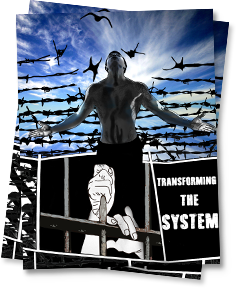Incorporating restorative justice principles
Restorative justice practices provide a useful alternative to our traditional retributive justice model. Traditionally, after a crime, our justice system asks three questions: (1) What law was broken? (2) Who broke it? (3) What punishment is warranted? This “process of justice deepens societal wounds and conflicts rather than contributing to healing and peace.”
Restorative justice asks an entirely different set of questions: (1) Who was harmed? (2) What are the needs and responsibilities of all affected? (3) How do all affected parties together address needs and repair harm?
In contrast to the conventional, retributive criminal justice process, restorative justice operates off the premise that committing a crime is not wrong because it breaks a rule, but because it causes harm, and there is an obligation to understand and repair that harm. In doing so, restorative justice “strives to build a web of relationships” and the crucial sense of rebuilding justice that the traditional American criminal justice system ignores in its haste to punish offenders. It has been lauded as a more holistic and rehabilitative approach to criminal justice that empowers victims, addresses the needs of all parties, and holds responsible parties meaningfully accountable for their actions while fostering dialogue and understanding.
There are several models of restorative justice including mediation between the two parties involved in the incident, family or community group conferencing, and peacemaking or sentencing circles. In all three, the victim, the person who caused harm, and often friends, family, and “key supporters” of those involved come together to participate in deciding the response to the crime, allowing those who committed the offense to understand the true impact of their actions while also offering them the opportunity to take responsibility for their crimes.
An important function of the conference is to allow both the person who caused harm and the harmed party to get access to key social support to prevent recidivism or recover from the violation. In a sentencing capacity, the victim, the person who caused harm, supporters, and the community, including judges and police, reach a consensus on an acceptable sentence. In some cases, the group may find it appropriate for the offender to participate in community service or a violence prevention program, and show accountability to the victim directly (whether that is through a written apology, financial compensation or a mural). In other cases, such as the high profile case in which the restorative justice processes were used to facilitate sentencing in a voluntary manslaughter case, a defendant may receive a prison sentence within sentencing guidelines, informed by the restorative process.
Restorative justice has been used to successfully derail the “school to prison pipeline,” the process by which young people are pushed out of school and into the criminal justice system. In 2005, Oakland Unified School District began implementation of a comprehensive restorative justice system throughout the district. Four years after implementation, reading levels had doubled, absenteeism had dropped by 24%, and graduation rates had risen by 60%. While restorative principles have often been focused on juveniles and less serious offenses, several programs are showing how it can be effective for adults who have committed serious offenses. In Brooklyn, the Vera Institute hosts Common Justice “the first alternative-to-incarceration and victim service program in the United States that focuses on violent felonies in the adult courts.”
Diverting cases such as assault and robbery, Common Justice facilitates a dialogue process that recognizes the harm done, identifies the needs and interests of those involved, and develops appropriate resolutions to hold the responsible party accountable, which include an intensive violence prevention program.
Restorative justice not only lives up to our ideals, it’s considerably more effective at creating safe communities in an efficient way. Restorative justice programs have been shown to reduce recidivism and have higher victim satisfaction rates than traditional criminal justice approaches.
Studies show that individuals in restorative justice programs were more likely to complete their programs and less likely to reoffend; these programs were associated with reduced recidivism for adults and youth; and both survivors and individuals had higher perceptions of fairness of these programs. Center for Restorative Youth in Flathead County, Montana decreased the county’s youth recidivism rate to 13% compared to the state’s rate of 46% overall; “The numerical improvement is encouraging, but the folks . . . in Flathead County agree that the most important ‘measurements’ are the new relationships that are created: the strengthened community and the previously nonexistent bonds that were formed.” Moreover, it is an economically sound approach to criminal justice matters, especially considering the alternative. “A recent Pew Research study estimated that increased incarceration accounted for less than one-third of the drop in crime in the United States since 1990. Yet, states currently spend approximately $51 billion per year on corrections. With a national recidivism rate of approximately 50%, it is clear that incarceration is a highly expensive yet highly ineffective means of handling crime.” To benefit from restorative justice practices, the federal and state governments should provide funding and other incentives to support locally-implemented restorative justice programs.
Local governments and the judiciary should establish restorative justice programs that address community justice matters.
School administrations should adopt comprehensive restorative justice models within their schools for school disciplinary matters.




